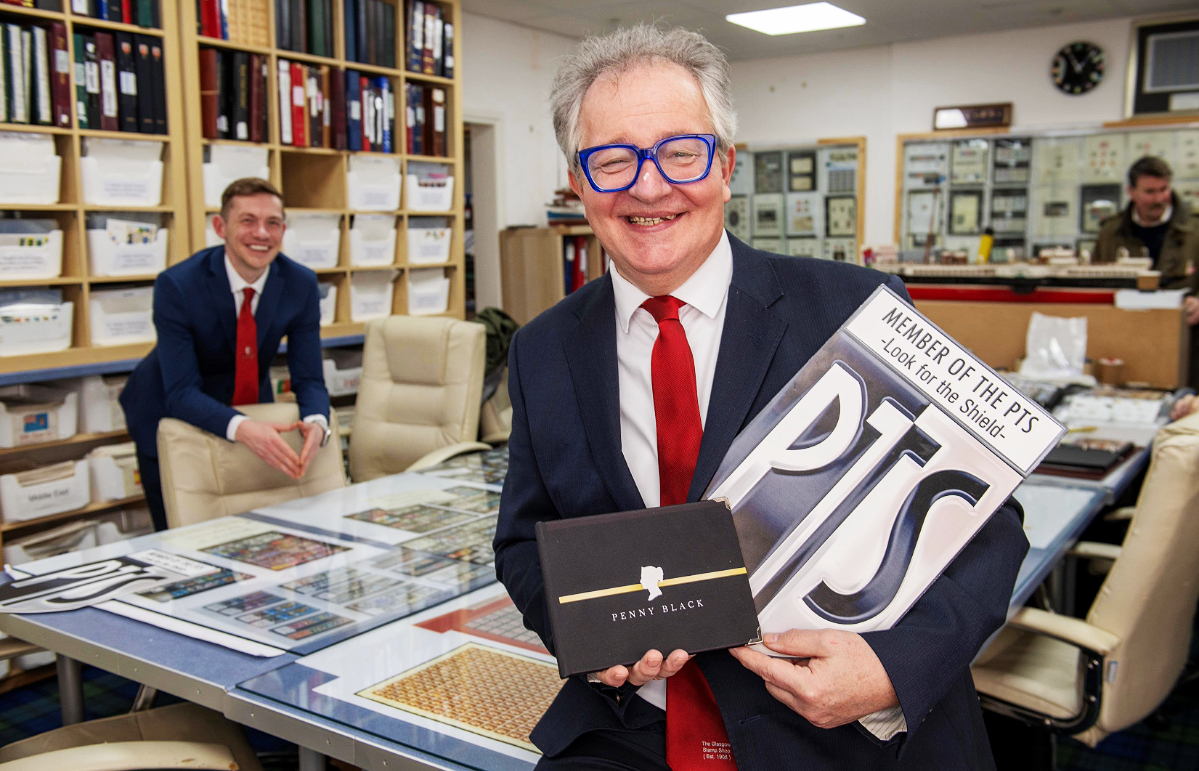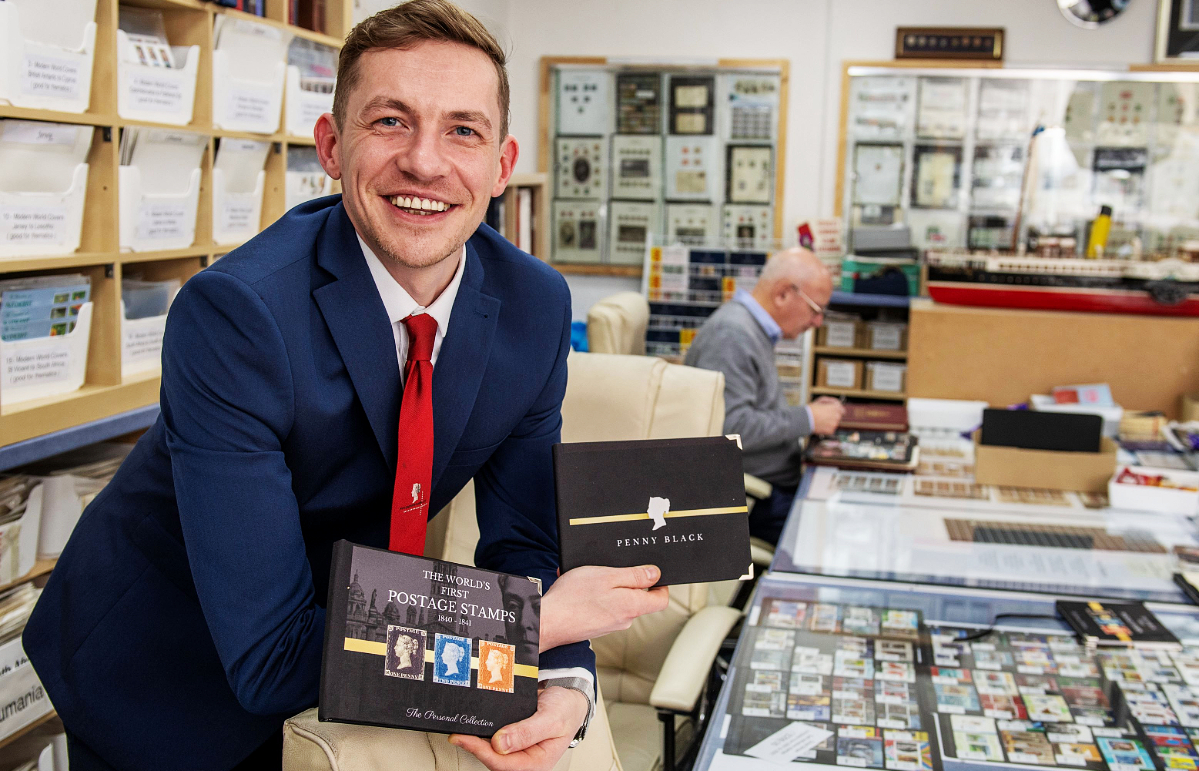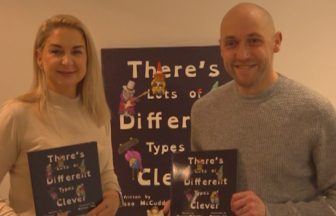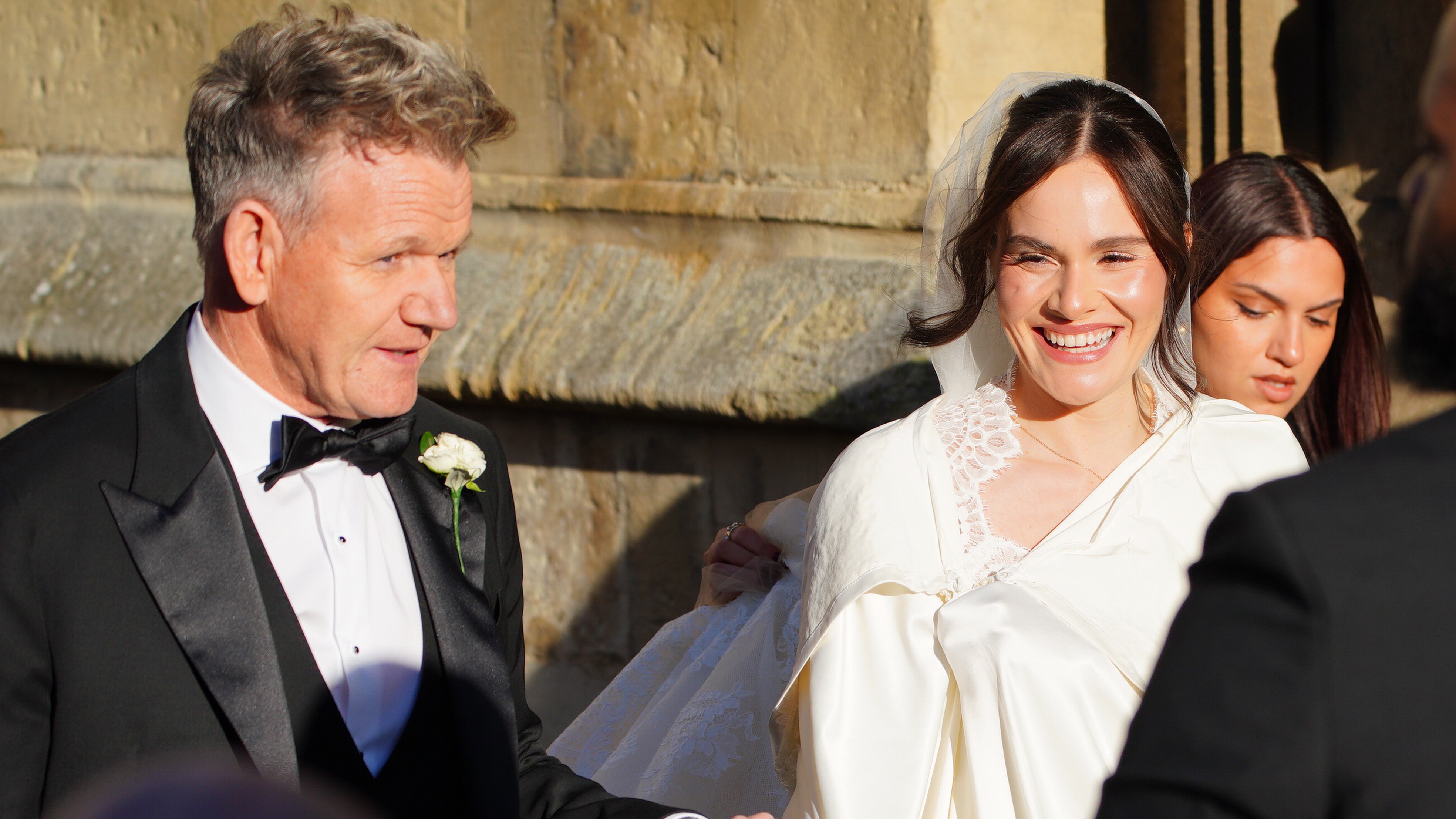A family-owned Glasgow institution has created a unique £4,500 book containing every version of the world’s first stamp.
Opened in 1908, the Glasgow Stamp Shop is run by father and son Gordon and Austin Carroll – and is home to the largest collection of stamps in the UK.
“There are very few stamp shops still around but we’re still here and have been a long time,” Gordon told STV News.
“People come across albums in the attic, they bring it in and we have look at it.
“Most of the albums belonged to a relative in the Merchant Navy or a previous generation.
 Supplied
Supplied“I love it. People always have a story.
“If there is something, they can put it to auction or go on the internet.”
Gordon said stamps have helped illustrate history, creativity and culture, showing how the world has changed in the last 180 years.
He said it was his son Austin who came up with the idea to create a book which would allow a non-collector to understand the historical significance of the Penny Black – the world’s first stamp.

Though millions of Penny Blacks were printed, most were thrown away since they were seen at the time as having no value. The surviving remnants of the print runs can now be worth fortunes.
The book contains genuine original stamps including the Penny Black, the Penny Red and two versions of the Two Penny Blue.
The book explains the rationale for the introduction of stamps as a form of receipt, and the fact that they were a very British invention adopted across the globe.
“It came from appreciation of the fact that it’s a milestone in communications history (in 2022),” he said.

“We had fire signals, messenger people then there was a leap forward with a postal system – and the world shrinks all of a sudden.
“I see it as a stepping stone, marking a piece of our own human history.
“There are all different reasons people will collect, whether that’s for a specific topic, region or country.”
He added: “When countries changed political situations or if they changed names, such as old colonies gaining independence, the first thing they did was bring out stamps.”
 Supplied
SuppliedGordon said people come to his shop from all over the world hunting for stamps and hoping to find out more about the ones they have.
He added: “A lady once came in who was collecting stamps with hands on them. She spent two hours in here and found over 300.. It’s the things you don’t think of.
“Everything you can imagine is on a stamp.
“I was caught out once. Someone was looking for a stamp of the millennium bug. At first I said it wasn’t possible as it wasn’t physical, but I was determined to find out.
“But there it was, from Indonesia; an image of an insect charged with electricity.”
A second book The Personal Collection, selling for £850, delves into how the British invention was adopted across the globe, changing the face of communications forever.

Gordon added: “The Personal Collection is essentially a stamp album, with four original genuine Victorian stamps and a lot of explanatory text. It has never been done before and a lot of experts cannot now imagine why not.
“People are very, very interested. A lay person can pick up the book and it will make sense to them. It is not too technical, or in-depth – it is not meant to be.
“Both books are based on a finite resource – Victorian stamps, of which there is not an endless supply – so, like everything else in life, there can be no guarantee of increased value but we believe they will appeal to investors who recognise two unique, legacy productions.”
Despite technological advances, Gordon said there will always be a special place for traditional stamps.
“People still want to send cards,” he said.
“People also collect stamps which are to do with other things they like, such Harry Potter or Star Wars.
“We had a bride wanting to choose stamps with flowers on it for her wedding invites.
“People are still using it for a bit of fun, though no longer a necessity. That’s the difference.
“It’s interesting how it has grown.”
Follow STV News on WhatsApp
Scan the QR code on your mobile device for all the latest news from around the country




























